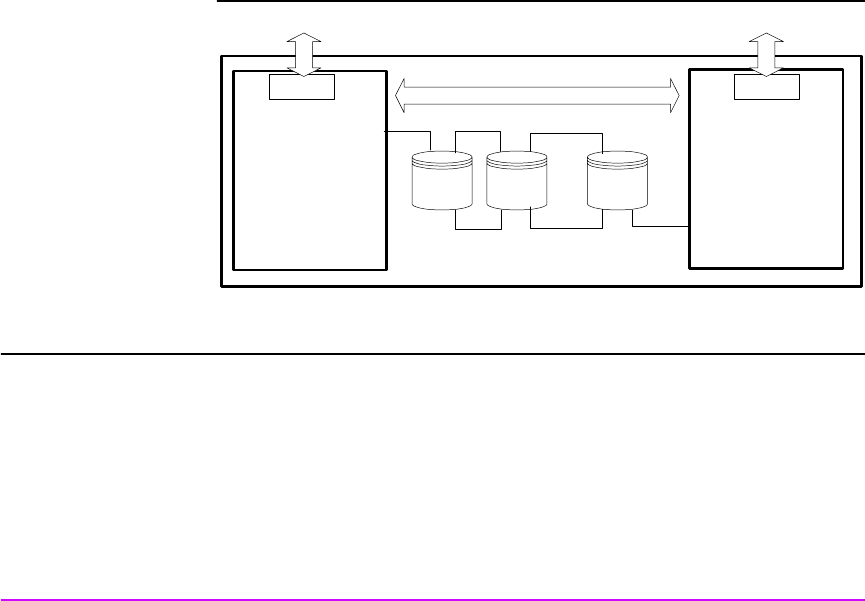HP StorageWorks Virtual Array 7000 Family User and Service Guide (January 2005)
Table Of Contents
- Warranty Information
- Product Overview
- System Configurations
- Lowest Entry Point, Non-HA Minimum Configuration (VA 7100 only)
- Lowest Entry Point, Non-HA Minimum Configuration (VA 7410)
- Entry Level Non-Cluster With Path Redundancy (All VA arrays)
- Entry Level Cluster with Path Redundancy High Availability (VA 7410)
- Midrange Non-Cluster (All VA arrays)
- Midrange Non-Cluster (VA 7410)
- Midrange Non-Cluster with Full Storage Path Redundancy (All VA Arrays)
- Typical Non-Clustered with Path Redundancy (VA 7410)
- Typical Clustered Configuration (All VA models)
- Typical Clustered Configuration (VA 7410)
- HP-UX MC Service Guard or Windows 2000 Cluster (All VA arrays)
- Highly Redundant Cluster (VA 7410)
- Typical Highly Redundant Cluster (All VA models)
- Typical Highly Redundant Cluster (VA 7410)
- Troubleshooting
- Servicing & Upgrading
- Specifications & Regulatory Statements

40 Product Overview
high-performance disks, and the other RG from large, slower, high-
capacity disks.
The VA 7100 and VA 7400/7410 differ in their implementation of
redundancy groups.
VA 7100/7110 Redundancy Group
The VA 7100 and VA 7110 each have one redundancy group (RG1). See
Figure 13 and Figure 14. All the disks in the array belong to RG1. LUNs
created from RG1 are available through both controllers (in a dual controller
configuration).
There are two internal fibre channel loops, one from each controller. The Fibre
channel disks are dual ported; each fibre channel port is connected to a
different controller. The controllers are connected via an internal high-
performance bus, which allows the LUNs to be accessed through both
controllers, and for loop or disk failover communication.
Figure 13 VA 7100 Redundancy Group
Controller 1
RG1
Host
Controller 2
RG1
Host
N-Way Bus
D2
RG1
D15
RG1
...
D1
RG1










